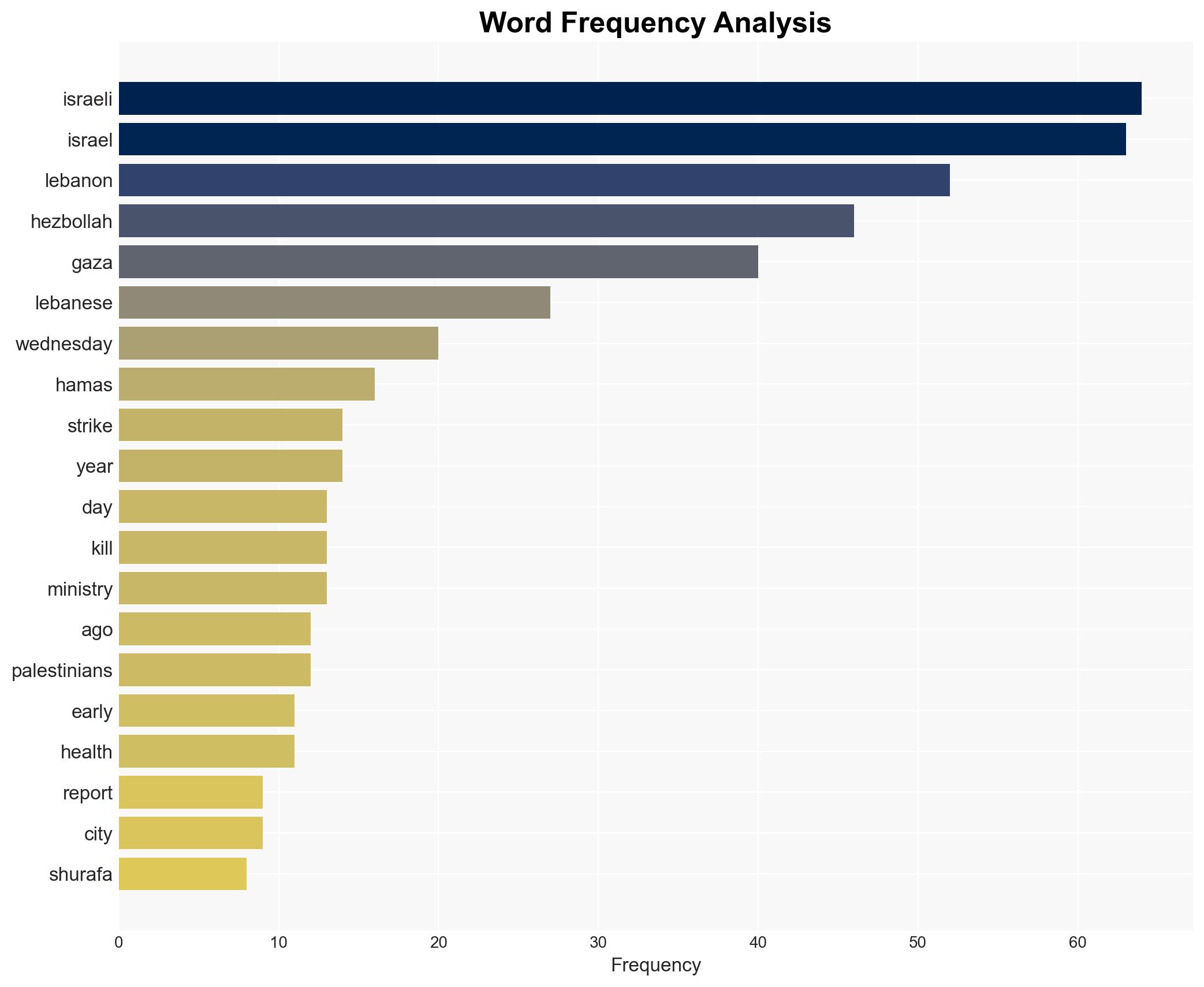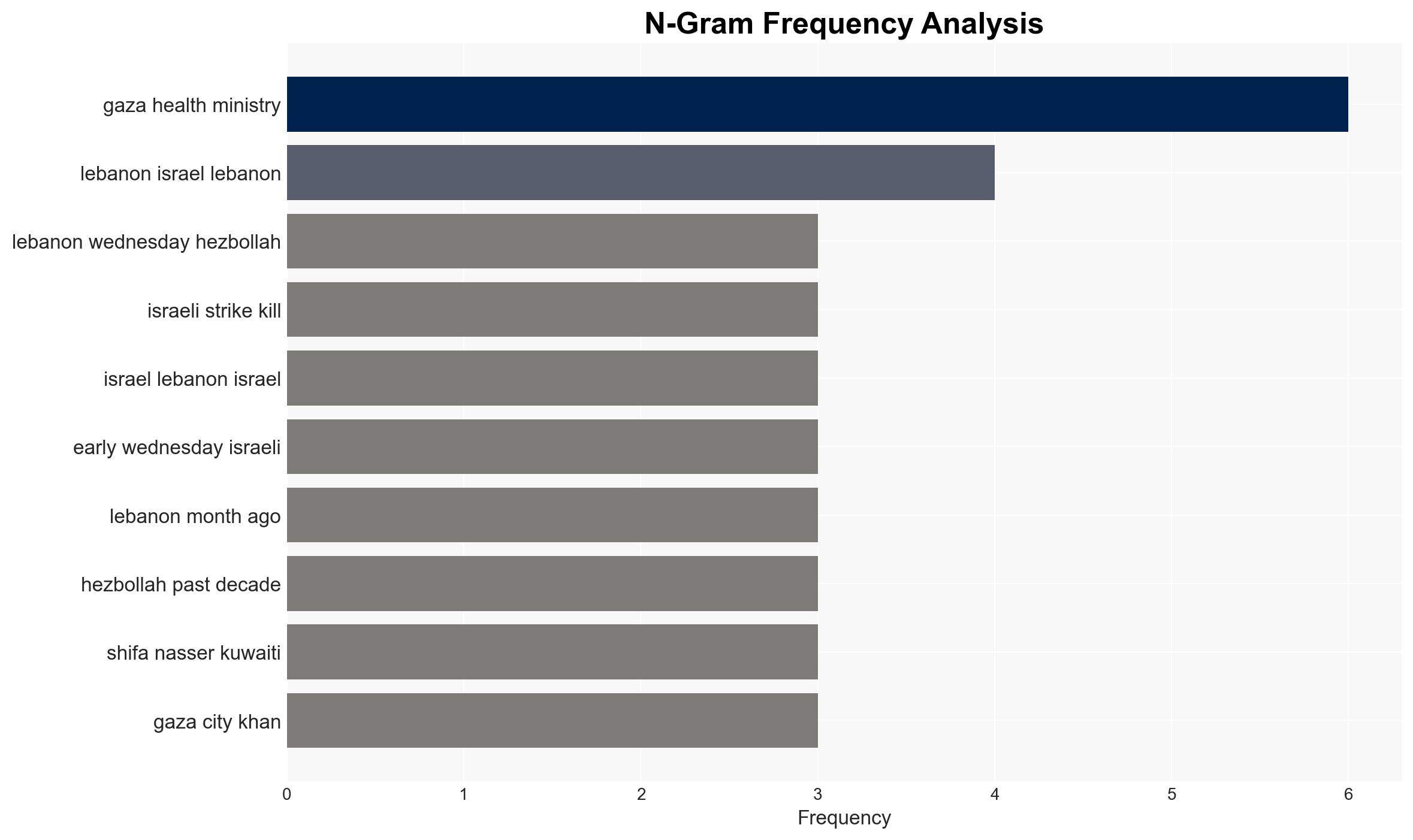Israels military carries out strikes in Lebanon and Gaza killing dozens of people – Boston Herald
Published on: 2025-11-19
AI-powered OSINT brief from verified open sources. Automated NLP signal extraction with human verification. See our Methodology and Why WorldWideWatchers.
Intelligence Report:
1. BLUF (Bottom Line Up Front)
The most supported hypothesis is that Israel’s military strikes in Lebanon and Gaza are primarily aimed at degrading Hezbollah’s military capabilities and deterring future attacks. This is likely in response to perceived threats from Hezbollah and Hamas, exacerbated by recent escalations. Confidence Level: Moderate. Recommended action includes diplomatic engagement to de-escalate tensions and monitoring for potential retaliatory actions from Hezbollah or Hamas.
2. Competing Hypotheses
Hypothesis 1: Israel’s strikes are a preemptive measure to degrade Hezbollah’s military infrastructure and deter future aggression, particularly in response to recent provocations and intelligence indicating imminent threats.
Hypothesis 2: The strikes are primarily a retaliatory response to recent attacks from Hezbollah and Hamas, intended to demonstrate military strength and resolve, rather than a strategic preemption.
Hypothesis 1 is more likely given the strategic targeting of Hezbollah’s infrastructure and the historical context of preemptive Israeli actions to neutralize perceived threats.
3. Key Assumptions and Red Flags
Assumptions: It is assumed that Israeli intelligence has credible evidence of Hezbollah’s military buildup and potential threats. It is also assumed that Hezbollah’s infrastructure is embedded within civilian areas, complicating military operations.
Red Flags: Potential bias in reporting from involved parties, as both Israel and Hezbollah have vested interests in shaping the narrative. The lack of independent verification of claims regarding civilian casualties and the nature of targets struck.
Deception Indicators: Possible exaggeration of threats by either side to justify military actions or garner international support.
4. Implications and Strategic Risks
The strikes risk escalating into a broader conflict involving regional actors, potentially drawing in Iran or Syrian elements allied with Hezbollah. There is also a risk of increased civilian casualties leading to international condemnation and potential sanctions. Cyber and informational warfare could intensify as both sides seek to control the narrative and disrupt each other’s operations.
5. Recommendations and Outlook
- Engage in diplomatic efforts with regional and international partners to de-escalate tensions and establish communication channels between Israel and Lebanon.
- Enhance intelligence-sharing mechanisms to verify claims and reduce misinformation.
- Best-case scenario: Successful de-escalation and resumption of ceasefire agreements.
- Worst-case scenario: Full-scale conflict involving regional powers, leading to significant humanitarian and economic impacts.
- Most-likely scenario: Continued low-intensity conflict with sporadic exchanges of fire and limited international intervention.
6. Key Individuals and Entities
Hussein Malla, Bassem Mroue, Wafaa Shurafa (Associated Press journalists), Gen. Rudolph Haikal (Lebanese Army Commander), Hezbollah, Israeli Military.
7. Thematic Tags
Structured Analytic Techniques Applied
- ACH 2.0: Reconstruct likely threat actor intentions via hypothesis testing and structured refutation.
- Indicators Development: Track radicalization signals and propaganda patterns to anticipate operational planning.
- Narrative Pattern Analysis: Analyze spread/adaptation of ideological narratives for recruitment/incitement signals.
Explore more:
Counter-Terrorism Briefs ·
Daily Summary ·
Support us





